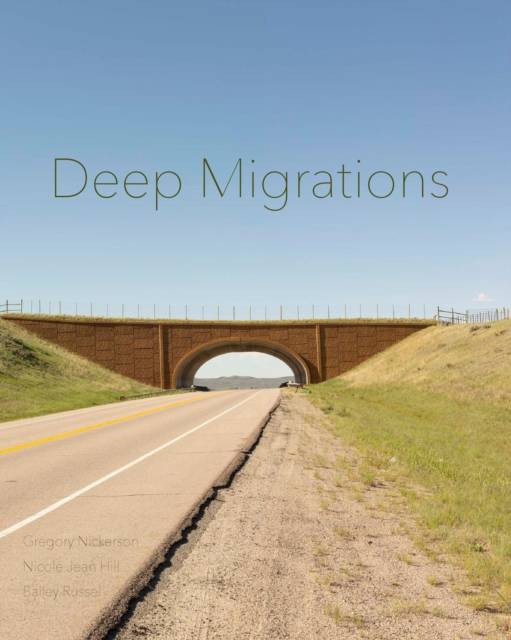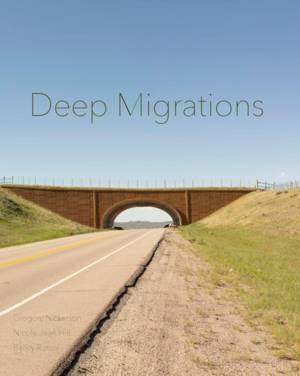
- Afhalen na 1 uur in een winkel met voorraad
- Gratis thuislevering in België vanaf € 30
- Ruim aanbod met 7 miljoen producten
- Afhalen na 1 uur in een winkel met voorraad
- Gratis thuislevering in België vanaf € 30
- Ruim aanbod met 7 miljoen producten
Zoeken
Omschrijving
Two photographers and a historian examine the deep roots of wildlife movement in Wyoming, from extinct columbian mammoth, to lost migrations of bison on the Laramie Plains and recent efforts to build wildlife overpasses for deer and pronghorn in the Green River Basin. The book features two essays by Gregory Nickerson on lost and conserved migrations with sources, and three portfolios of photographs. Bailey Russel uses the tintype process to document specimens of Wyoming wildlife in museum collections, while Nicole Jean Hill photographs traces of wildlife movement. In his second group of images Russel photographs the landscapes of today's migrations in the Green River Basin, showing trails of both humans and wildlife. This project was funded by the University of Wyoming College of Arts and Sciences Interdisciplinary Seed Grant, with support from the Wyoming Migration Initiative.
Alleen bij Standaard Boekhandel
+ 77 punten op je klantenkaart van Standaard Boekhandel
Beoordelingen
We publiceren alleen reviews die voldoen aan de voorwaarden voor reviews. Bekijk onze voorwaarden voor reviews.









